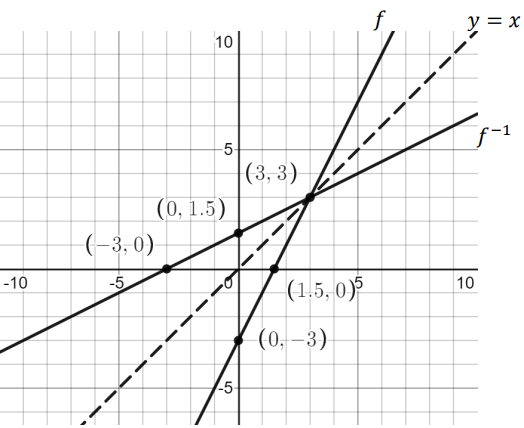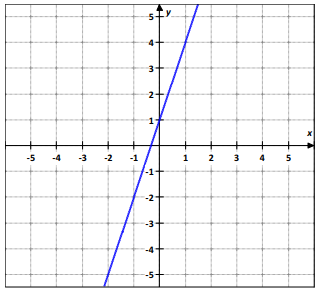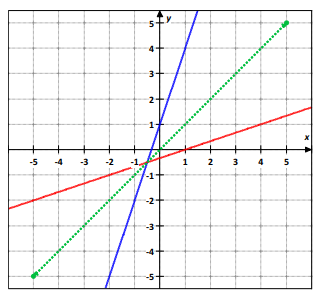FINDING INVERSE OF A FUNCTION
Definition of f−1 :
Suppose f is a one-to-one function.
To find a formula for f −1(y), solve the equation f(x) = y for x in terms of y.
In order to find the inverse of any function, we have to prove that the given function is one to one.
Definition of one to one function :
A function f is called one-to-one if for each number y in the range of f there is exactly one number x in the domain of f such that f(x) = y.
Domain and range of inverse function :
- The domain of f−1 equals the range of f ;
- the range of f−1 equals the domain of f .
Important note :
The inverse function is not defined for a function that is not one-to-one.
Relationship between f and f−1
Suppose f is a one-to-one function and x and y are numbers. Then
f(x) = y if and only if f −1(y) = x.
Question 1 :
Suppose f(x) = 2x + 3.
(a) Evaluate f−1(11).
(b) Find a formula for f−1(y).
Solution :
In order to find the inverse function, first let us prove the given function is one to one.
The domain of the function f(x) is all real values, each real values of x is associated with unique elements of y. So it is one to one function.
y = f(x) = 2x + 3
2x + 3 = y
2x = y - 3
x = (y - 3)/2
Replace x by f-1 (y) and y by x.
f-1(y) = (y - 3)/2
Question 2 :
Suppose the domain of f is the interval [0, 2], with f defined on this domain by the equation f(x) = x2.
(a) What is the range of f ?
(b) Find a formula for the inverse function f −1.
(c) What is the domain of the inverse function f −1?
(d) What is the range of the inverse function f −1?
Solution :
f(x) = x2
|
If x = 0 f(0) = 0 |
If x = 1 f(1) = 1 |
If x = 2 f(2) = 4 |
From this, we know that range is [0, 4].
(b) Find a formula for the inverse function f −1.
From the table given above, we know that each values is associated with unique elements. So it is one to one.
y = x2
x = √y
Here x can be replaced by f-1(y), so f-1(y) = √y
(c) What is the domain of the inverse function f −1?
Domain of f −1 = Range of f = [0, 4]
(d) What is the range of the inverse function f −1?
Range of f −1 = Domain of f = [0, 2]
Question 3 :
The surface area A (in square meters) of a person with a mass of 60 kilograms can be approximated by
A = 0.2195 h0.3964
where h is the height (in centimeters) of the person.
a. Find the inverse function. Then estimate the height of a 60-kilogram person who has a body surface area of 1.6 square meters.
b. Verify that function A and the inverse model in part (a) are inverse functions
Solution :
A = 0.2195 h0.3964
Finding inverse function :
A/0.2195 = h0.3964
h = (A/0.2195)1/0.3964
a) When A = 1.6 square meter, h = ?
h = (1.6/0.2195)1/0.3964
h = (7.289)2.522
h = 149.8
Approximately 150 cm.
Question 4 :
𝒇(𝒙) = 𝟐𝒙 − 𝟑
a) Determine 𝑓 −1 (𝑥)
b) Show that 𝑓(𝑓 −1 (𝑥)) = 𝑓 −1 (𝑓(𝑥)) = 𝑥
c) Graph 𝑓 𝑎𝑛𝑑 𝑓 −1
Solution :
a)
𝒇(𝒙) = 𝟐𝒙 − 𝟑
Let y = 2x - 3
y + 3 = 2x
x = (1/2)(y + 3)
Put x = 𝑓 −1 (𝑥) and y = x
𝑓 −1 (𝑥) = (1/2)(x + 3)
b) 𝑓(𝑓 −1 (𝑥))
Applying the 𝑓 −1 (𝑥) in the function f(x).
𝑓((1/2)(x + 3)) = 2(1/2)(x + 3) - 3
= x + 3 - 3
= x -----(1)
𝑓 −1 (𝑓(𝑥)) = 𝑓 −1 (2x + 3)
Applying the value of f(x) in 𝑓 −1 (x)
= 2(x/2 + 3/2) - 3
= x + 3 - 3
= x -----(2)
(1) = (2)

Question 5 :
Answer the following. Assume that f is a one-to-one function.
a) f(4) = 5, find f-1(5)
b) f(3) = 9 and f(9) = 5, find f-1(9)
Solution :
a) Given that f(4) = 5
f-1(5) = 4
b) Given that f(3) = 9 and f(9) = 5
For the function f(x) :
- When x = 3, y = 9
- When x = 9, y = 5
- (3, 9) and (9, 5).
f-1(9) = 3
Question 6 :
Use the graph of each function to graph its inverse function.
f(x) = 3x + 1

Solution :
Some of the points on the line,
(0, 1) (1, 4) (-1, -2) (-2, -5)
Finding points on the inverse function :
(1, 0) (4, 1) (-2, -1) and (-5, -2)

Determine whether each function has an inverse function. If it does, find the inverse function and state any restrictions on its domain.
Question 7 :
f(x) = (4x - 1)/(x - 1)
Solution :
y = (4x - 1) / (x - 1)
- Domain of the function f(x) is (-∞, 1) and (1, ∞).
- Range of the function f(x) is (-∞, 4) and (4, ∞).
y(x - 1) = 4x - 1
xy - y = 4x - 1
xy - 4x = y - 1
x(y - 4) = y - 1
x = (y - 1)/(y - 4)
So, the required inverse function is
f-1(x) = (x - 1)/(x - 4)
Domain and range of inverse function :
- Domain of the function f(x) is (-∞, 4) and (4, ∞).
- Range of the function f(x) is (-∞, 1) and (1, ∞).
Kindly mail your feedback to v4formath@gmail.com
We always appreciate your feedback.
©All rights reserved. onlinemath4all.com
Recent Articles
-
Digital SAT Math Problems and Solutions (Part - 150)
Apr 25, 25 11:46 AM
Digital SAT Math Problems and Solutions (Part - 150) -
AP Calculus AB Problems with Solutions (Part - 19)
Apr 24, 25 11:10 PM
AP Calculus AB Problems with Solutions (Part - 19) -
AP Calculus AB Problems with Solutions (Part - 18)
Apr 24, 25 11:06 PM
AP Calculus AB Problems with Solutions (Part - 18)
